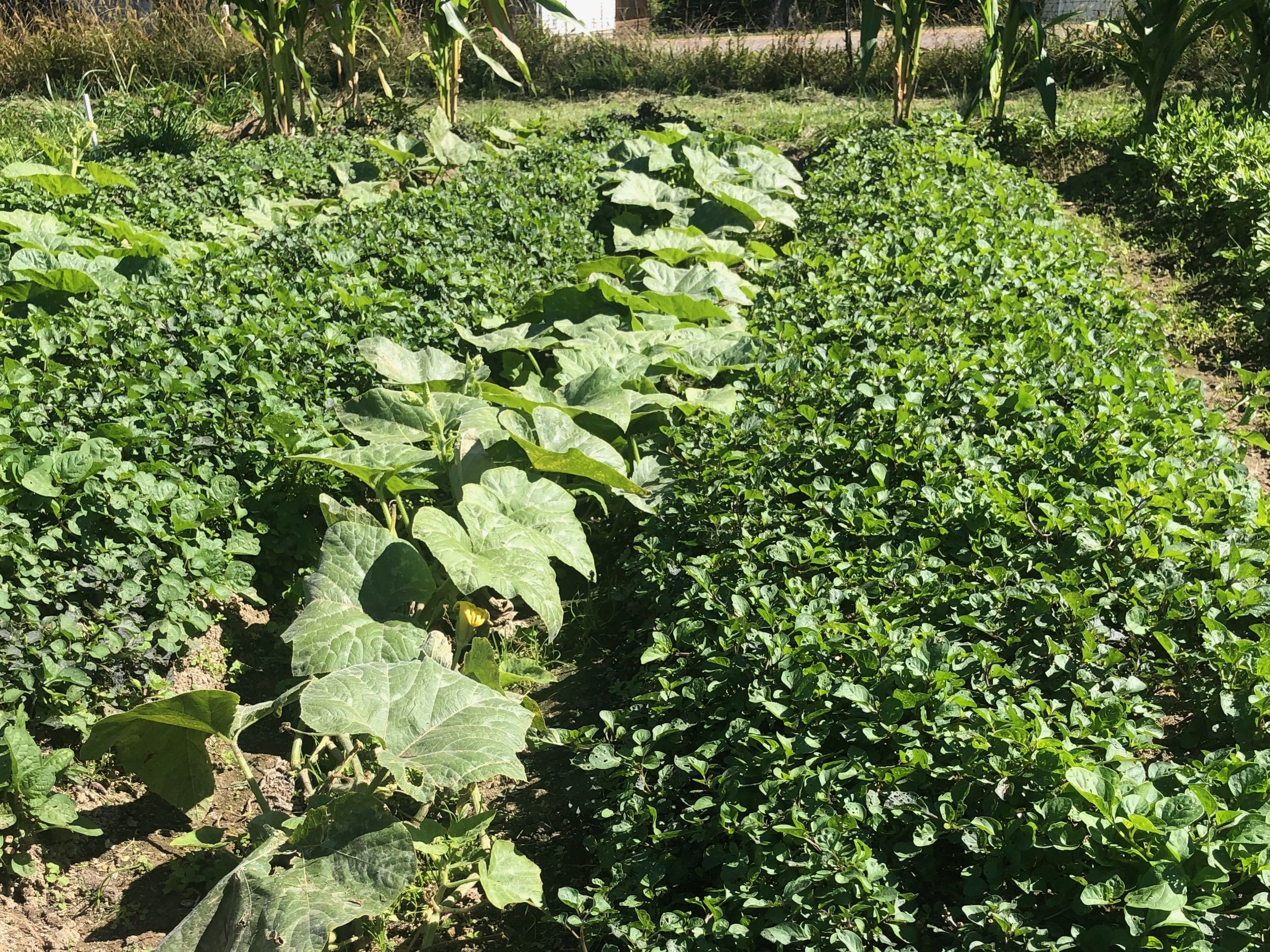
Regenerative Agriculture
Regenerative gardening is a philosophy that guides your actions in the garden. A regenerative gardener grows and protects the relationship between them and the ecosystem and recognizes that they are a part of it. Because regenerative agriculture works with nature instead of against it, it goes beyond being sustainable to truly helping to regenerate.
Generally, this style of gardening:
is forward-thinking
values ecosystem support over aesthetics
makes as little negative impact on the earth as possible
works with nature instead of against it
The benefits of this approach range from healthier soil to improved diversity of bird life, plants, bees and insect populations. Luckily for us, it’s nothing new! Indigenous peoples have been using these techniques for years—long before the boom of industrial agricultural practices became the rage.
There are many methods and techniques to consider when putting regenerative agriculture into practice.
Healthy Soil
One goal of regenerative agriculture is to make your soil healthier than it currently is. Healthy soil produces healthy plants, making it the key to a healthy, sustainable garden. However, soil is exposed to a variety of risks on a daily basis. Climate is a big one—exposure to rain, frost, extreme heat and wind can drastically impact the health of soil.
There are many ways to improve your soil, including the following:
Smart Mulching
Mulch is essentially an organic, manmade blanket used to protect the fertility and nutrient content of soil. It provides many well-documented, practical benefits to your garden: retaining soil moisture, controlling weeds, preventing soil surface crusting and the resulting erosion, buffering soil temperatures, minimizing maintenance and protecting plants from mowing injury.
Composting
Composting is one of the better-known practices of regenerative gardening. We need to add organic matter to soil from time to time to support beneficial organisms that normally live there—the same organisms that play a part in optimizing plant growth. Composting helps regenerate the soil’s natural biodiversity while remediating compacted and/or contaminated soil. By supporting crops to become healthier, compost makes them more resistant to pest pressure and diseases.
While there are a variety of compost “recipes” out there, we recommend focusing instead on creating an optimal setup and environment for decomposition. Active (hot) composting—where you help speed up the decay process—is a good way to go. This involves controlling several key factors: volume, particle size and moisture levels. Keep an eye on our calendar or sign up for our newsletter for upcoming composting classes.
Enhanced Biodiversity
Wilderness is disappearing at an alarming rate. But there’s something you can do in your home garden to combat the loss of plant and animal species: support a natural ecosystem. Nowhere in nature will you see just one variety of plant. Growing different crops and pollinator plants together encourages all the plants to thrive. It also is able to support a diverse range of insects, birds and other beneficial wildlife, creating a more robust ecosystem. Providing the habitat and food for predator and beneficial insects can help to naturally control the pest population in your garden, too.
While research is ongoing, experts believe that native plants offer the most benefit for pollinators in terms of nectar, pollen, seeds, shelter and nesting sites. Simply growing native plants in your yard—many of which are beautiful—can help pollinators and other beneficial wildlife. Native plants are adapted to the local climate and soil conditions where they naturally occur. Since they require less watering and fertilization than most non-natives, they’re inherently sustainable. They also support pollinators and other wildlife.
Ready to get back to our roots with native plants, invasive species control, sustainable turf alternatives and more? Start at the CGC! We offer classes throughout the year and host a native plant sale featuring locally grown plants each fall.
No Pesticides and Chemicals
The goal of healthy soil is to have as much diversity and as many organisms as possible. The use of pesticides and chemicals poses an undeniable hazard to this process. Although they may be used to rid our plants of unwanted pests and diseases, we must think of the ecosystem and the microscopic participants in that system before we reach for a chemical. Even chemical fertilizers seriously affect the health of fish, amphibians and insects.
Making sure the soil is healthy can help reduce the need for potentially harmful substances. Because most pests like unhealthy plants, the bottom line is that healthy soil makes for healthy plants! If you’re ready to utilize more sustainable garden practices, our classes and resources can help.
Water Efficiency
Water scarcity is a global concern and a problem in our own backyards. While it may be difficult to put yourself in the shoes of a child in Africa struggling to find fresh water, it's important to understand that water scarcity affects everyone—even in the U.S., where it’s increasingly in short supply in many parts of the country.
There are a variety of strategies you can use for designing water-thrifty gardens. We offer classes throughout the year to help you implement some of those strategies in your garden or yard, covering everything from rain barrel making to succulent care and modern drip irrigation to gardening in soggy spaces. Sign up for our newsletter to stay in the loop. The Green Learning Station even has a cool water model that illustrates how Cincinnati’s combined sewer overflow system is a real problem for our city…but one that is finally being addressed!
